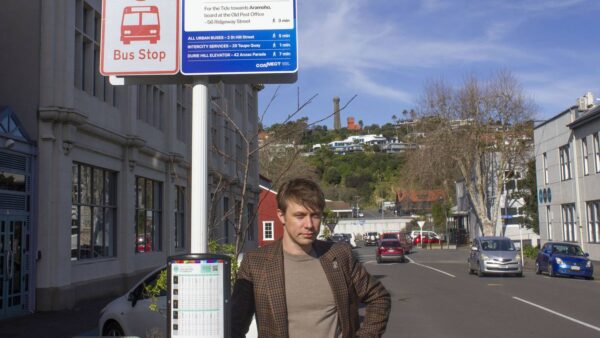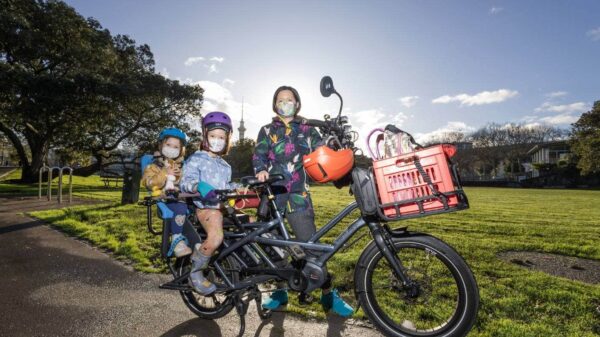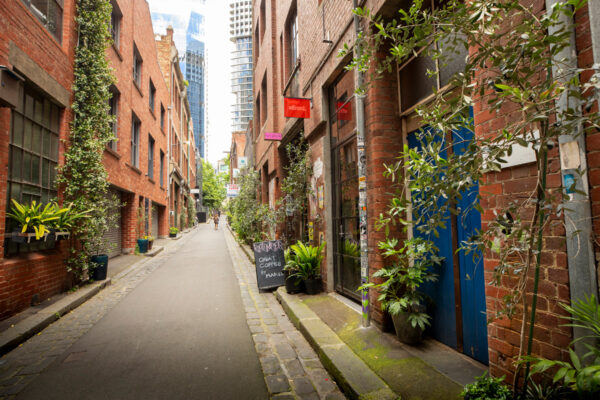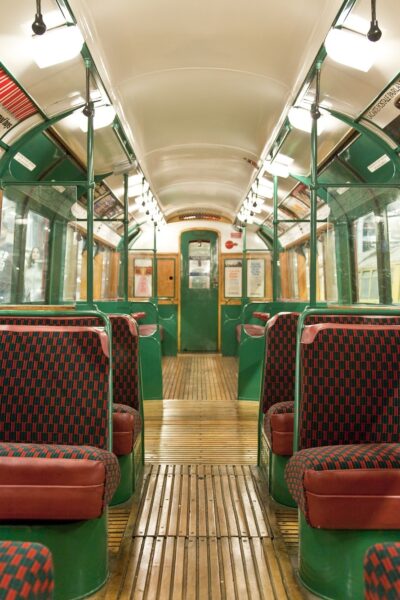Welcome to the last Friday roundup of August, with spring just around the corner. Here are a few of the headlines that caught our eye this week. As always, feel free to comment with your take, and any stories we might have missed.
The week in Greater Auckland
- Monday’s post by Matt covered the Ferry Bad News about AT cancelling several ferry routes due to lack of staff.
- On Tuesday, Matt looked at AT’s sudden discovery that it can, indeed, adjust parking prices to reflect its wider strategy. Matt also spoke to RNZ about this, noting the importance of the speediness of the change:
“It shows that they are able to make these changes relatively quickly, where in the past they tried to argue that there was a long and complicated process to do those types of changes.
“AT is showing that they can move quickly if they want to.”
- And on Wednesday, Matt covered the latest plans out of Auckland Light Rail: more clarity on the routes through Onehunga (close to the town centre) and Māngere (away from the town centre.)
Elsewhere in the media, Matt commented on:
- The implications of AT’s decision to ditch improvements to the Upper Harbour Drive bike lane protection: “Just like with housing, it’s much easier for a small number of people to loudly oppose change and get Local Boards to think opposition is larger than it is.”
- Labour’s announcement of a NW busway: “”It was one of Auckland’s biggest transport mistakes that we didn’t build it a decade ago when we spent all that money widening the North western at the time,” and the importance of future-proofing the next investment: “How do we make it easy for people to get to the busway. And that’s through bus connections, and walking and cycling, and those kinds of things.”
- The chance of achieving the Road to Zero safety targets, which have been downgraded:
“In part because Waka Kotahi doesn’t want to. Despite public statements, internally officials often say it’s not possible so don’t try. This hasn’t been helped by politicians. Over the last six years, National have pushed very hard to turn any, even minor, change to roads into a culture war. Media have helped with this through countless articles every time a change is proposed.< “The Government hasn't helped either, through a lack of strategic messaging on the need for change and not holding to account their agency for lack of delivery. As a result I think Labour are now a bit scared and falling back on what they think is a more populist approach rather than an evidence-based one. I think we see the same issue in things like climate change.”
HOP Top Up
An email from Auckland Transport to registered HOP card users announced changes to how long online top-ups take
Good news – now you can top up online and ride within 1 hour
When you top up your AT HOP card online, it will now be ready to use on buses within an hour.
This is already the case for train and ferry trips, so we’re excited to bring this new service to your bus journeys too.
Connecting our buses
Previously, online top-ups would take 24-72 hours to be ready, as buses needed to return to their depot to access wifi.
We’ve been in the process of connecting all of our buses with 3G/4G connectivity.
Now that the whole fleet is connected, online tops are processed much faster.
Other online actions you might do like adding a concession to your AT HOP card or setting up an auto top-up will also be ready within 1 hour now.
This is fantastic news and will make HOP cards much easier to use. My only concern is why are AT announcing it so quietly? They should be shouting this from the rooftops.
Turning the Tide for Public Transport
A lovely article about a small revolution in a small town, with big implications for others – musician and public transport enthusiast Anthonie Tonnon is leading a travel transformation in Whanganui.

There’s a back-to-the-future lesson here, in that the thinking around the new regular service, Te Ngaru/ The Tide, has its roots in historically great local public transport:
“The thing that got me excited about Whanganui is that our city was built around public transport. Much of our housing was built along tram lines. This meant that even when the trams went in 1950, the population density that we put on those tram corridors meant it was efficient for us to keep providing good public transport with the Greyhound bus system, from 1950 to 1991. Bus services went frequently, and services ran as late as 11pm.”
As Tonnon points out, The Tide is not just about bringing back patronage (up 80% on this time lat year), it’s about bringing back confidence:
“I like the name because The Tide has been out for public transport in Whanganui for a long time. This is a chance to bring it back in.”
The E-bike Revolution Rolls On
Here’s a great project in Whakatāne: an e-bike library that lets locals borrow an e-bike for up to 21 days, to see how it works for them. It offers a range of options to suit all kinds of riders and all kinds of trips: 12 bikes in 5 styles, from cargo bikes all the way through to an e-trike.
Co-sponsored by Waka Kotahi with Whakatāne District Council, it’s a Transport Choices project, supported by the Climate Emergency Response Fund, and fits into the council’s Active Whakatāne strategy. Here’s how it works:
All that’s needed is a bit of paperwork and a $100 koha to Cycling Without Age EBOP, the community partner operating the programme.
Anyone who takes part in the scheme will also receive a $100 voucher from Whakatāne Cycle Centre or Full Cycle Bikes toward the purchase of an e-bike.
There’s a very cute video on Facebook as well.
Supporting people to discover and use e-bikes remains one of the lowest-hanging fruit for transport equity, emissions reduction, nicer streets, zippier last-mile deliveries, and freeing up the growing pressure on our roads, among other things. New Zealand is still a very slow follower on this stuff, when it could be a leader.
In Denver, for example, e-bikes are outselling car-sized EVs:
“We were one of the first pioneers of e-bikes in Boulder or maybe even in Colorado,” said [bike shop owner Chuck Ankeny]. “Yeah, back in 2007, we were selling electric bikes, and nobody else was doing it. … Everyone was laughing at us, and they are not laughing today.”
Business at Ankeny’s Boulder shop has never been better.
“Through the pandemic it was insane,” he said. “People were getting into biking that had never biked before.”
Recent statistics show e-bikes are now outselling car-sized EVs.
“The last couple of years, e-bikes have been … outselling maybe cars by a 10% to 20% margin,” said Andrew Duvall, a transportation analyst at the National Renewable Energy Laboratory [whose study of a two-year e-bike pilot scheme] found that about 30% of the participants’ e-bike trips replaced a car trip.
The study found participants preferred to use e-bikes when travelling between one and four miles. Considering 50% of all trips in the U.S. are shorter than three miles and more than 60% of all trips are shorter than five miles, a car, which is often used for those short trips, could easily be replaced by an e-bike.
As the headline of this article puts it, “It’s not an ‘electric bike craze’ – You’re looking at the future of transportation.”
Local life on wheels
Lots of great local links to share this week:
- A fantastic first-person piece in the Spinoff by EJ Barrett, about how bike lanes enable greater mobility for disabled people, too: “I am very, very excited about the way that cycle infrastructure will better the lives of me and my three children, especially when I am having low mobility days.”
- A fab story from Kirikiriroa about a middle-aged mum who’s dipped her toes into the e-bike world and is loving it: “So far I’ve clocked up over 150km in just under a month – and all of it on short local trips… 100% would recommend picking up an e-bike and giving it a whirl.”
- A great interview with the founder of the Pt Chev Bike Train, about the origins of the idea, how it’s benefiting the kids, and how it’s inspiring other communities.
- An insightful story about people who ride in Auckland (with kids, even) and how they cope with the everyday hazards of careless drivers and bike lane bullies.

- And here’s a nicely narrated ride-through of one of Wellington’s newest pop-up cycleways, by Patrick Morgan of Cycle Wellington. As you’ll see, it’s not perfect, but it’s a start and it gets people from A to B.
Could be time for versions of this animation for New Zealand cities, to show progress (or the lack of it) on those all-important bike networks?
So I made this animated map of the growth of NYC protected bike infrastructure last summer and put it on Wikipedia. I hope this encourages people who support this infrastructure, and I'd love feedback for how to make it better if I do a second version. pic.twitter.com/171OGe1Ir8
— James Barnard (@Baizhijie) August 22, 2023
Meanwhile in Melbourne…
Always interesting to compare notes with our cousin cities. Given our super-rainy year here, feels like the premier of Victoria is just trolling Auckland with this one:
Here’s a heroic before-and-after of how adding simple concrete tim-tams can transform the experience of the city for everyone:
https://twitter.com/_dmoser/status/1691000573313630208
And Melbourne is running a cheerful trial to green up the city’s laneways, which grows out of (see what we did there) an ongoing programme to transform the city from grey to green.
The “Greening Melbourne permits” are designed “to support community-led greening and empower community members and businesses who wish to place temporary greening on Council-owned footpaths within the City of Melbourne.” The permits cover, but aren’t limited to:
- potted flowers and plants on footpaths.
- greening on the facade of your building which overhangs public space, including climbing plants, window planters and hanging floral baskets.
- green wall systems located on your building wall which overhangs public space.

The Travel Corner
The classic Kiwi OE is alive and well, as seen in this lovely story by journalist Anna Loren, of bike-packing through various cities in Asia en route to Europe with her partner:
In just a few short months, I’ve seen things and had experiences that have changed me forever. I’ve ridden a cable car over a sputtering sulphur field. I’ve stood in the demilitarised zone, looking across the border into North Korea. I’ve whizzed through a mountain village where the dirt roads are lined with drying corn and children gather outside their huts, hands outstretched for high-fives.
And this article had us at the headline: “I visited eight European countries without flying, and I loved it.”
The Guardian’s rail route of the month is “an alpine epic from Zurich to Graz” – for reference, that’s about 100km longer than the train trip from Auckland to Wellington. Just saying.
If you happen to be in London in September, you can ride a restored 1938 tube train along the Metropolitan line on the weekend of 9-10 September. We’ll leave you with this image of the train’s interior, with its highly Wes Anderson vibes.



 Processing...
Processing...
Is this called cattle flooring, what happens if you drop your keys, does it go down to the track, and what about the complaints from ladys with high heals.
Wellington, Willis Street, Tram in the rain by William Stewart
https://teara.govt.nz/en/artwork/24497/city-lights-1960s
“What, in the end, makes advertisements superior to criticism? Not what the moving red neon says—but the fiery pool reflecting it in the asphalt.”― Walter Benjamin, 1928
It is an election year so that any announcement is really ,just a populist soundbite.l sense Labour are adopting a “scorched earth” policy at present,pushing through policy,that the inevitable incoming coalition,will have to expend time and resources undoing,if they are true to their word. Smart politics, but wasteful for the progress of the country.
Re the Upper Harbour “improvements,never a fan of single sided bi-directional cycleways,so maybe rubber tim tams is the best that can be hoped for,at least not completely ripped out. This could provide a blue print for cycleway implementation,less opposition to rubber tim tams,then convert to concrete.
“Labour are adopting a “scorched earth” policy at present,pushing through policy”
Lolwhut? Labour are burning their own policies, rather than pushing them through.
I’m old enough to remember when London tube trains were not so different from that one all the time.
Yep, me too. And the wooden escalators.
How did so many motorists hit the cycle way protection slabs? How are these people allowed to be in a car.
They were driving as if it was still a country road. Some of them, because of their age, should probably not be driving.
I’ve always suspected AT chose this road for a cycleway knowing things would go wrong, and there would be massive opposition. If they had put the dividers on a slower road there would have been a lot fewer crashes. Upper Harbour should have come after other, slower, roads.
“I’ve always suspected AT chose this road for a cycleway knowing things would go wrong, and there would be massive opposition. If they had put the dividers on a slower road there would have been a lot fewer crashes. Upper Harbour should have come after other, slower, roads.”
I know the AT people involved. They were unprepared for the backlash, and really would wish they hadn’t done this one as one of the first ones. But that was a bad call, not malicious.
It is still totally beyond me how concrete separators doing exactly what they were designed to do – i.e. protecting vulnerable people on bikes, in the bike lane, from two tons of speeding steel – is seen as a bad thing, and removed! Is there any more blatant way of indicating how some people compare the value of a human life to the value of a car?
Good result on the Upper Harbour cycle lane. Bike Auckland were literally the only group in favour and the vast majority were against throwing more good money after bad, so I’m not sure what Matt is on about other than implying Bike Auckland should have more say than the large number of residents that use the road every day.
“throwing more good money after bad” – they should have left the original separators in then, and people should learn to drive properly.
“Bike Auckland were literally the only group in favour”
Not sure what you mean. Bike Auckland were in favour of the original design. I don’t think they submitted in a sense of “yeah, do this” – much more likely their submission was “If you HAVE to do this, then its’ okay”. You got their submission text as to what they saud?
Interesting stuff, cycling on the up and up in some regions.
The example in the guardian of the train connecting Graz and Zurich might not be the best example to explain why Switzerland and Austria have the highest train ridership in Europe. Trains are frequent (usually at least hourly), connecting even remote locations, are on time (!!!) to allow transfers. They are also affordable (cheaper than a car or kiwirail) and easy to use. Austria has recently introduced the climate ticket, which allows you to ride every public transport for a year (www.klimaticket.at/en). I have a regional option for Styria which costs me only 1€ a day. With the result that ridership in Austria is projected to be up 20 percent over the best year so far. And finally there is also a night train connecting Graz with Zurich.
Greetings from Graz
From action-packed adventures to Geometry Dash strategic simulations, there’s something for every gamer who’s ever dreamed of walking with dinosaurs.